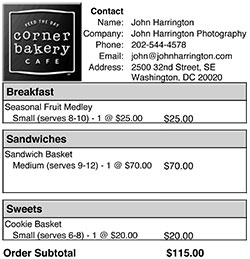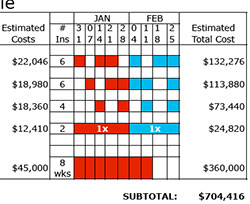JUST ANNOUNCED! Estimates & Bids
 Back in October, we launched Assignment Construct, which delved into the what, where, when, why and how (not so much the who), of assignment photography. To date, nearly 20,000 people have looked at over 50,000 pages of those insights.
Back in October, we launched Assignment Construct, which delved into the what, where, when, why and how (not so much the who), of assignment photography. To date, nearly 20,000 people have looked at over 50,000 pages of those insights.
So, what was missing? Well, aside from the "who", it was really, the "how much."
Enter Estimates & Bids, and the approach that "many minds, useful results" can provide insights to all.
One of the things that has been happening for probably seven or eight years, is that friends and colleagues have been calling to bounce ideas off me as to pricing and negotiating for a wide variety of assignments. These are calls I was happy to take, and moreover, I've made a few calls myself.
Of late, I've been getting a nice collection of e-mails of the same nature, and moreover, I get the calls and e-mails myself from prospective (and repeat) clients, all looking for estimates for the work I do for them. These inquiries go beyond the inquiries I get that can be resolved by referring to my online calculator on my pricing pages on John Harrington.com. So, what better way than to take those requests, and shine the light of day on them in a public forum. To engage the collective mind, and do a little learnin' in the process?
So, if you're writing to ask me how I might price an assignment, I'm happy to help, and the conduit not only to my help, but that of the collective brain trust of photographers, is Estimates & Bids. Friends and colleagues will continue to call, but, the results of that exchange will (with their permission) likely end up on Estimates & Bids. You will then have the opportunity to put in your two cents, ask questions, and everyone benefits.
But, this is interactive. This requires participation in the comments section of each post. But, for a number of reasons, we've opted to keep the comments moderated, so the level of comment and learnin' will be much higher (hopefully!).
This will, by no means, be something that would take the place of Blinkbid or fotoBiz/fotoQuote. In fact, those software packages should be what you use to prepare your estimates to send off! They have things like terms and conditions, coaching capabilities for your phone calls back and forth, databases of past work, and tracking capabilities, secondary pricing modules for post-assignment stock inquiries, and so forth. I certainly rely on fotoQuote on what seems like an almost daily basis, but which I can be sure is definitely a weekly basis!
Lastly, if you have an inquiry from a prospective client, send it along, and we'll consider posting it with (hopefully) enough time between when you send it and we post it, and when you need to send in your own estimate. Perhaps this will help you in providing a thoughtful response to your prospective client's request.
So, please take a look. There are three real assignments aready up - two assignments I got a call for, and one that was an inquiry from a colleague, to lead things off.
Please post your comments by clicking the link below. If you've got questions, please pose them in our Photo Business Forum Flickr Group Discussion Threads.




